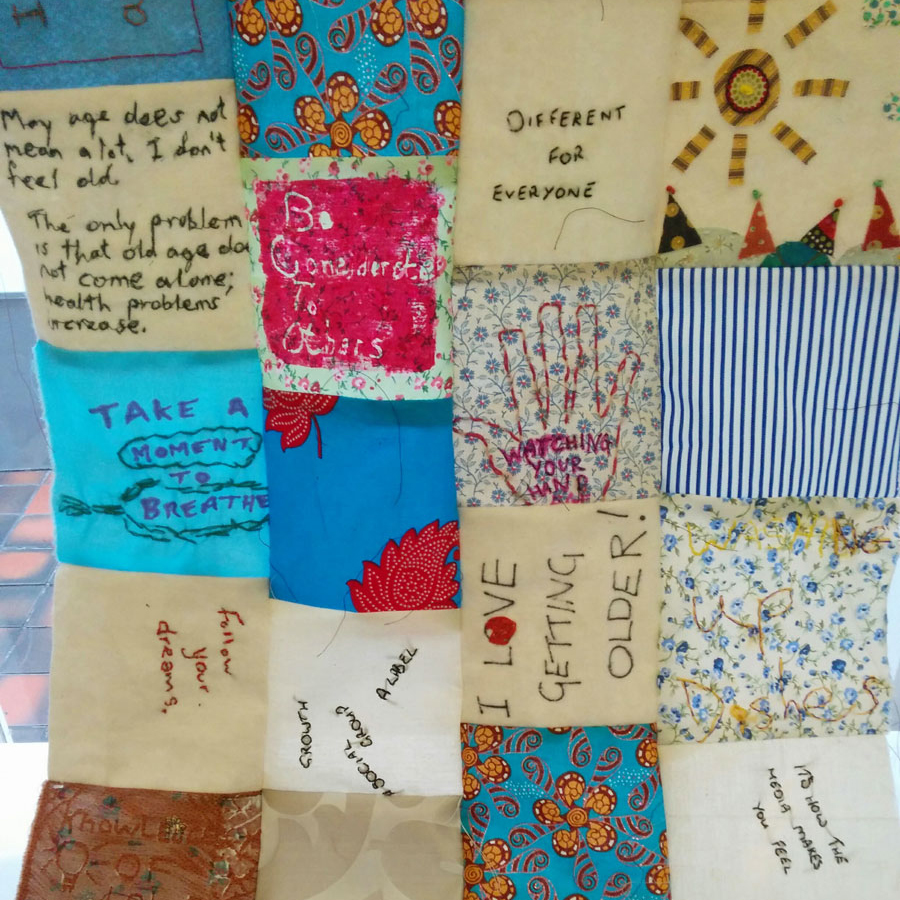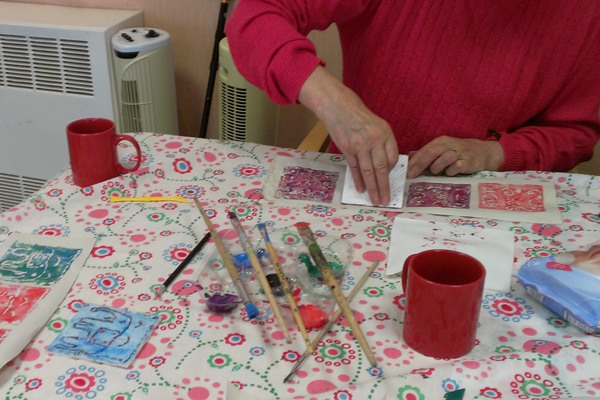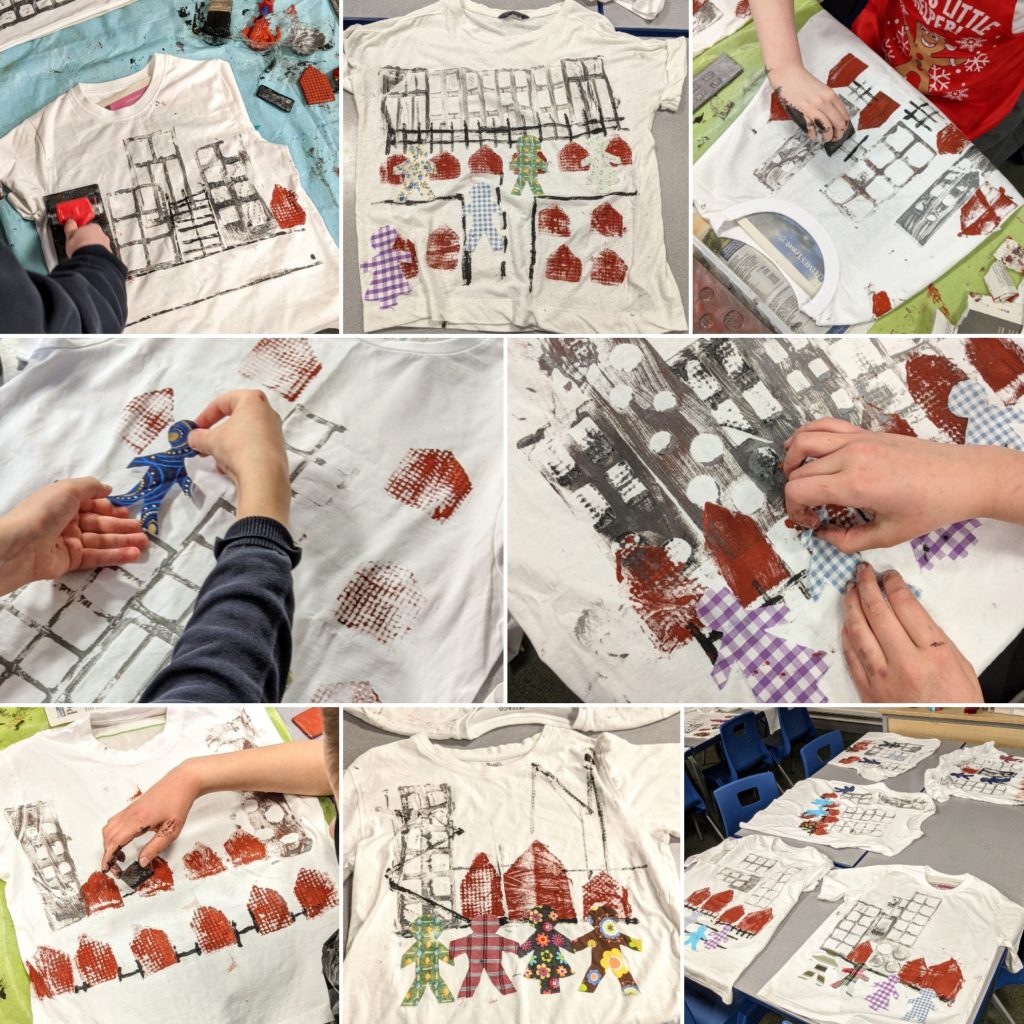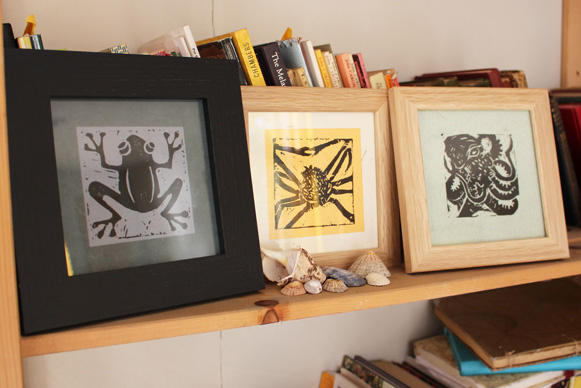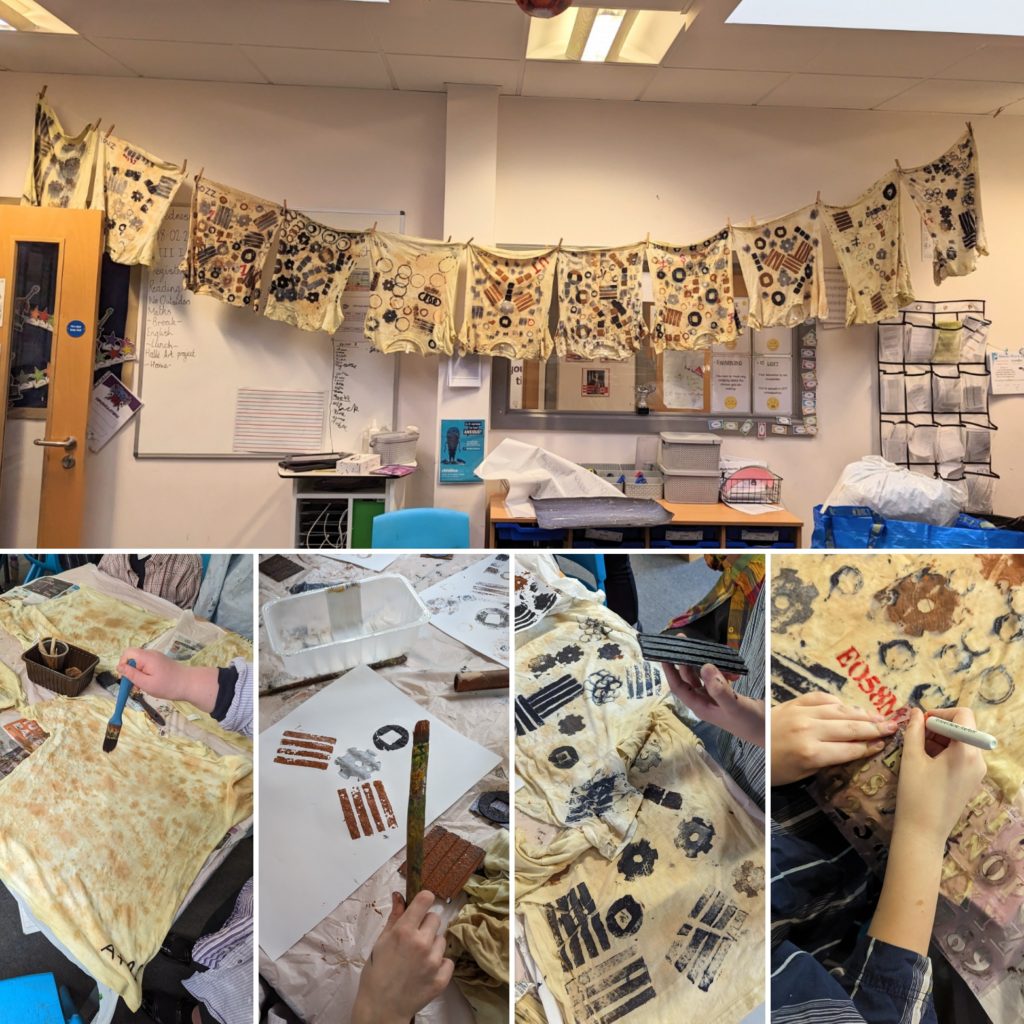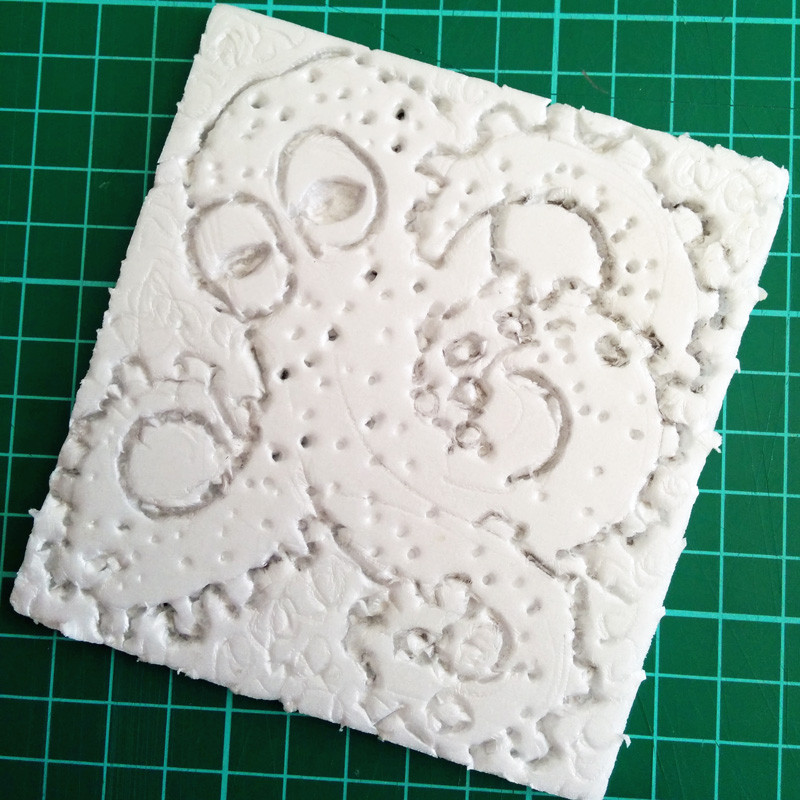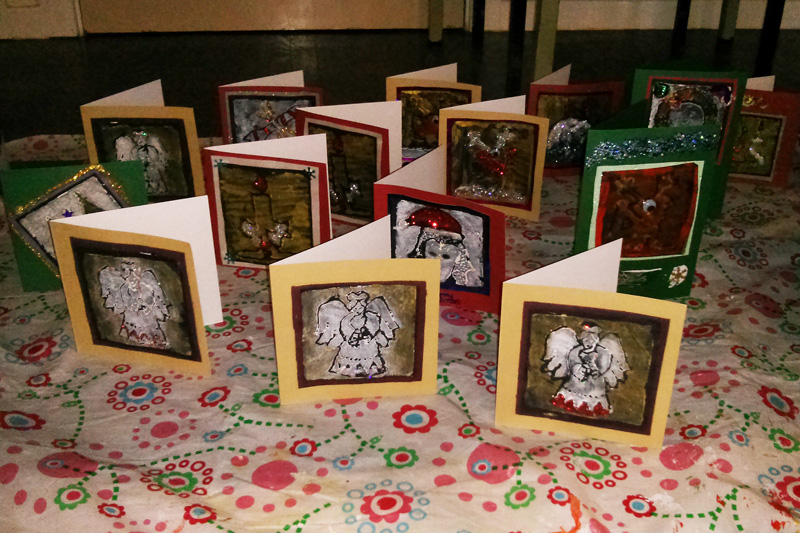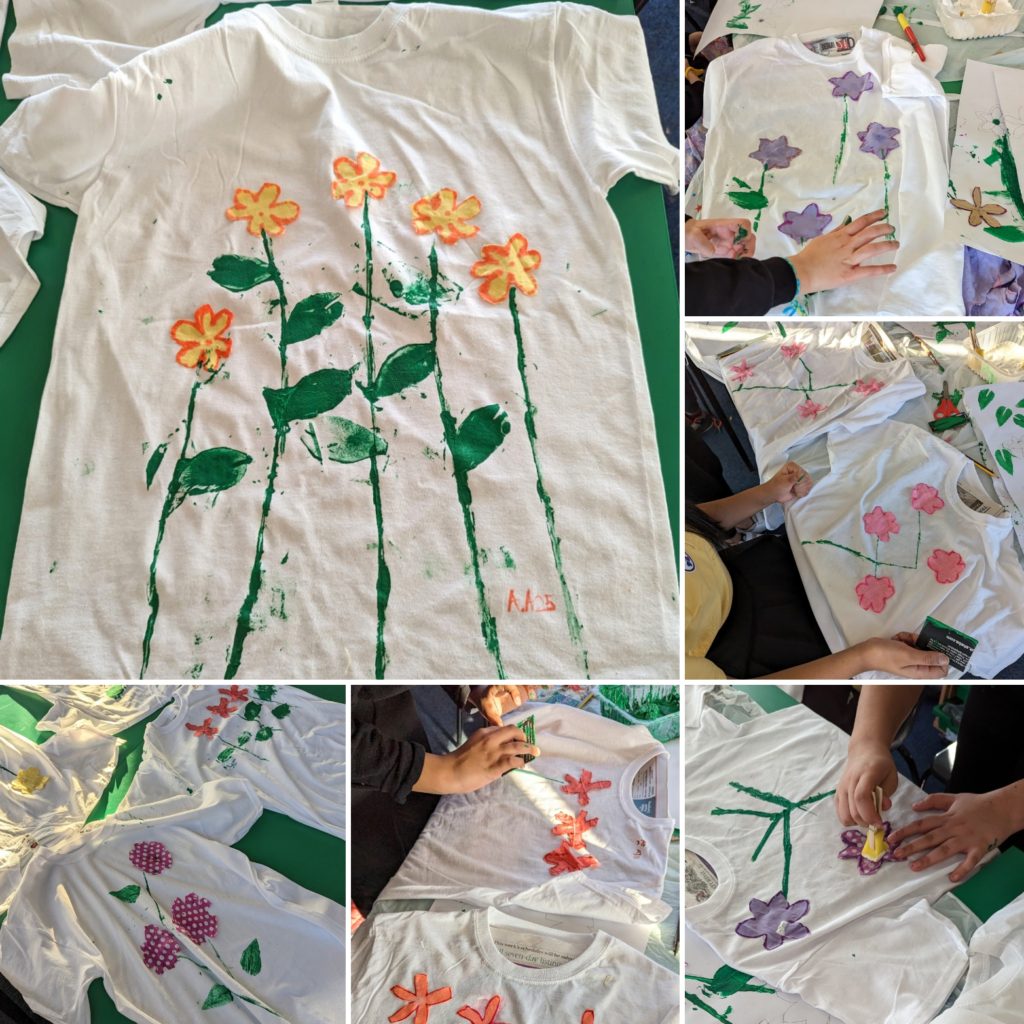Printing
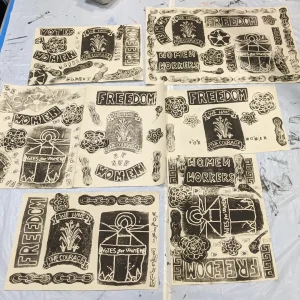
I run printing workshops with all age groups & abilities both as drop in sessions and as part of longer projects. Using monoprinting or relief printing – lino, poly, collagraph, stitched. I also run short or drop in sessions in making posters using a selection of pre-made blocks on a particular theme e.g. the women’s rights ones as part of the Gamechangers project. Prints can be framed or used to make cards, wrapping paper, book covers or fabric bag patches.
Poly Printing:
- Poly printing is good for all abilities as takes less pressure than lino. I have found it particularly good with kids, disabled groups and older people when manual dexterity & hand strength is an issue.
- It is good for short sessions and drop in events as can achieve something very quickly but there is also the scope to take more time to do bigger or more detailed work.
- Doesn’t need specialist equipment. I tend to use old pizza bases which are there free so less pressure regarding mistakes. You can use biros or pencils or clay tool or basically anything to create the grooves of your design/pattern.
- Prints can be made using normal paints as well as standard printing inks. I like getting groups to experiment with layering colours.
- Print & stitch workshops – print onto fabric and then embellish them using embroidery & beading techniques.
- Because it is soft, the image quality does deteriorate so limited reuse of the panel. Can be good for rough experiments before transferring a particular design onto lino.
Lino Printing:
- Creating and cutting a design into the lino plate – this needs a certain amount of time, dexterity and focus.
- With lino you can get a clean crisp image and fine detail.
- Lino needs special cutters & inks so is more expensive then poly printing.
- Lino is tougher and lasts longer so can create more copies from one panel.
Collagraphy:
- Collagraphy is a really versatile printing process using a textured plate.
- Anything with a low relief texture can be stuck down and used.
- Some of my workshops use themed ready-made simple relief panels used like stamps, arranged to create individual printed artworks.
- Collagraphs can be created using recycled cardboard or tetrapak. These can be made and printed in one session as working into the surface rather than building up layers.
- Traditionally, the elements forming the collagraph plate are glued in place so need strong quick drying glue or more then one session.
- I also run stitched collagraph workshops using textured wallpapers. The stitching allows for the build up of layers without glue and adds a texture of its own to the designs.
- Small collagraphs can be printed using a portable pasta machine.
Monoprinting:
- Monoprinting is the process of making a print using mark making.
- It is a good technique for creating quick and expressive print work and as the name implies, each is a one off.
- The paper is laid over the printed surface to pick up marks made on the reverse. This can be traditional drawing, traced elements or using unusual implements.
- Monoprints can also be created by working into the inked surface to remove areas and create textures before taking a print of the surface. This type has seen recent developments with the popularity of gelli plates.

